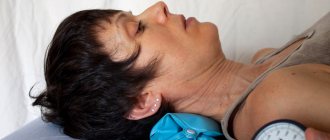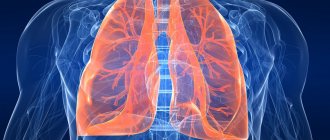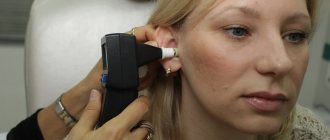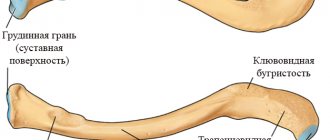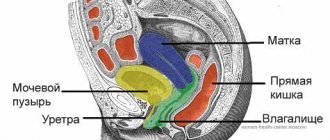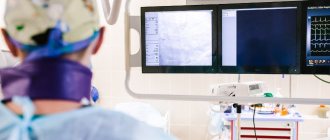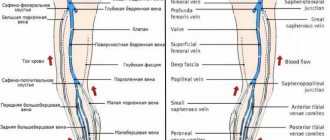Speech is a complex motor skill implemented by a large number of anatomical structures. The structure of the human vocal apparatus includes the organs of the respiratory system, larynx, tongue, teeth, etc. If the integrity of any of them is violated, the sound production process is disrupted. Knowledge of the anatomical structure and operating principle of the articulatory organs is important not only for singers or other professions related to music, but also for ordinary people. Speech disorders can occur in both children and adults, leading to disruption of the processes of social adaptation and learning.
Anatomical structure of the pharynx
The pharynx, another name is the pharynx.
It starts at the back of the mouth and continues down the neck. The wider part is located at the base of the skull for strength. The narrow lower part connects to the larynx. The outer part of the pharynx continues with the outer part of the mouth - it has quite a lot of glands that produce mucus and help moisten the throat during speech or eating. When studying the anatomy of the pharynx, it is important to determine its type, structure, functions and risks of disease. As mentioned earlier, the pharynx is shaped like a cone. The narrowed part merges with the laryngopharynx, and the wide side continues the oral cavity. There are glands that produce mucus and help moisten the throat during communication and eating. From the front side it connects to the larynx, from above it adjoins the nasal cavity, on the sides it adjoins the cavities of the middle ear through the Eustachian canal, and from below it connects with the esophagus.
The larynx is located as follows:
- opposite 4 - 6 cervical vertebrae;
- behind - the laryngeal part of the pharynx;
- in front - formed due to the group of hyoid muscles;
- above - hyoid bone;
- lateral - adjacent to the thyroid gland with its lateral parts.
The structure of a child's pharynx has its own differences. Tonsils in newborns are underdeveloped and do not function at all. Their full development is achieved by two years.
The larynx includes in its structure a skeleton, which contains paired and unpaired cartilages connected by joints, ligaments and muscles:
- unpaired consist of: cricoid, epiglottis, thyroid.
- paired ones consist of: corniculate, arytenoid, wedge-shaped.
The muscles of the larynx are divided into three groups and consist of:
- thyroarytenoid, cricoarytenoid, oblique arytenoid and transverse muscles - those that narrow the glottis;
- posterior cricoarytenoid muscle - is paired and expands the glottis;
- vocal and cricothyroid - strain the vocal cords.
Entrance to the larynx:
- behind the entrance there are arytenoid cartilages, which consist of cornuform tubercles, and are located on the side of the mucous membrane;
- in front - epiglottis;
- on the sides there are aryepiglottic folds, which consist of wedge-shaped tubercles.
The laryngeal cavity is also divided into 3 parts:
- The vestibule tends to stretch from the vestibular folds to the epiglottis.
- Interventricular section - stretches from the inferior ligaments to the superior ligaments of the vestibule.
- Subglottic region - located at the bottom of the glottis, when it expands, the trachea begins.
The larynx has 3 membranes:
- mucous membrane - consists of multinucleated prismatic epithelium;
- fibrocartilaginous membrane - consists of elastic and hyaline cartilages;
- connective tissue - connects part of the larynx and other formations of the neck.
Pharynx: nasopharynx, oropharynx, swallowing department
The anatomy of the pharynx is divided into several sections.
- How is swallowing done?
Each of them has its own specific purpose:
- The nasopharynx is the most important section, which covers and merges with special openings into the back of the nasal cavity. The function of the nasopharynx is to moisturize, warm, clean the inhaled air from pathogenic microflora and recognize odor. The nasopharynx is an integral part of the respiratory tract.
- The oropharynx includes the tonsils and uvula. They border the palate and the hyoid bone and are connected by the tongue. The main function of the oropharynx is to protect the body from infections. It is the tonsils that prevent the penetration of germs and viruses inside. The oropharynx performs a combined action. Without its participation, the functioning of the respiratory and digestive systems is not possible.
- Swallowing department (hyopharynx). The function of the swallowing department is to carry out swallowing movements. The laryngopharynx is related to the digestive system.
There are two types of muscles surrounding the pharynx:
- stylopharyngeal;
- muscles are compressors.
Their functional action is based on pushing food towards the esophagus. The swallowing reflex occurs automatically when muscles tense and relax.
The process looks like this:
- In the oral cavity, food is moistened with saliva and crushed. The resulting lump moves towards the root of the tongue.
- Further, the receptors, irritating them, cause muscle contraction. As a result, the sky rises. At this second, a curtain closes between the pharynx and nasopharynx, which prevents food from entering the nasal passages. The lump of food moves deep into the throat without any problems.
- Chewed food is pushed down the throat.
- Food passes to the esophagus.
Since the pharynx is an integral part of the respiratory and digestive system, it is able to regulate the functions assigned to it. It prevents food from entering the respiratory tract during swallowing.
What functions does the pharynx perform?
The structure of the pharynx makes it possible to carry out serious processes necessary for human existence.
Functions of the pharynx:
- Voice-forming. Cartilage in the pharynx takes control of the movement of the vocal cords. The space between the ligaments is constantly subject to change. This process regulates the volume of the voice. The shorter the vocal cords, the higher the pitch of the sound produced.
- Protective. The tonsils produce immunoglobulin, which prevents a person from becoming infected with viral and antibacterial diseases. At the moment of inhalation, the air entering through the nasopharynx is warmed and cleared of pathogens.
- Respiratory. The air inhaled by a person penetrates the nasopharynx, then the larynx, pharynx, and trachea. The villi located on the surface of the epithelium prevent foreign bodies from entering the respiratory tract.
- Esophageal. The function ensures the functioning of swallowing and sucking reflexes.
The diagram of the pharynx can be seen in the next photo.
- The structure of the human throat and larynx: photo
Diseases affecting the throat and pharynx
Diseases of the ENT organs can be triggered by an attack of a viral or bacterial infection. But pathology is also caused by fungal infections, the development of various tumors, and allergies.
Pharynx diseases manifest themselves:
- ARVI;
- sore throat;
- tonsillitis;
- pharyngitis;
- laryngitis;
- paratonsillitis.
Only a doctor can determine an accurate diagnosis after a thorough examination and based on the results of laboratory tests.
Possible injuries
The pharynx can be injured as a result of internal, external, closed, open, penetrating, blind and through injuries. Possible complication - blood loss, suffocation, development of a retropharyngeal abscess, etc.
First aid:
- in case of injury to the mucous membrane in the oropharynx area, the damaged area is treated with silver nitrate;
- deep injury requires the administration of tetanus toxoid, analgesic, antibiotic;
- severe arterial bleeding is stopped by finger pressure.
Specialized medical care includes tracheostomy and pharyngeal tamponade.
The first is the voice, the second is the melody
A person’s ability to produce sounds of different strength, pitch and timbre is associated with the movement of the vocal cords under the influence of a stream of exhaled air. The strength of the sound produced depends on the width of the glottis: the wider it is, the louder the sound. The width of the glottis is regulated by at least five muscles of the larynx. Of course, the force of exhalation itself, caused by the work of the corresponding muscles of the chest and abdomen, also plays a role. The pitch of the sound is determined by the number of vibrations of the vocal cords in 1 second. The more frequent the vibrations, the higher the sound, and vice versa. As you know, tightly stretched ligaments vibrate more often (remember a guitar string). The muscles of the larynx, in particular the vocal muscle, provide the necessary tension to the vocal cords. Its fibers are woven into the vocal cord along its entire length and can contract either as a whole or in separate parts. Contraction of the vocal muscles causes the vocal cords to relax, causing the pitch of the sound they produce to decrease.
Having the ability to vibrate not only as a whole, but also in individual parts, the vocal cords produce additional sounds to the main tone, the so-called overtones. It is the combination of overtones that characterizes the timbre of the human voice, the individual characteristics of which also depend on the condition of the pharynx, oral cavity and nose, movements of the lips, tongue, and lower jaw. The airways located above the glottis act as resonators. Therefore, when their condition changes (for example, when the mucous membrane of the nasal cavity and paranasal sinuses swells during a runny nose), the timbre of the voice also changes.
Despite the similarities in the structure of the larynx of humans and apes, the latter are not able to speak. Only gibbons are capable of producing sounds that are vaguely reminiscent of musical sounds. Only a person can consciously regulate the force of exhaled air, the width of the glottis and the tension of the vocal cords, which is necessary for singing and speech. The medical science that studies the voice is called phoniatry.
Even in the time of Hippocrates, it was known that the human voice is produced by the larynx, but only 20 centuries later Vesalius (16th century) expressed the opinion that sound is produced by the vocal cords. Even now, there are various theories of voice formation, based on individual aspects of the regulation of vocal cord vibrations. Two theories can be cited as extreme forms.
According to the first (aerodynamic) theory, voice formation is the result of vibrational movements of the vocal folds in the vertical direction under the influence of an air stream during exhalation. The decisive role here belongs to the muscles involved in the exhalation phase and the muscles of the larynx, which bring the vocal cords together and resist the pressure of the air stream. Adjustment of muscle function occurs reflexively when the mucous membrane of the larynx is irritated by air.
According to another theory, the movements of the vocal folds do not occur passively under the influence of an air stream, but are active movements of the vocal muscles, carried out by command from the brain, which is transmitted along the corresponding nerves. The pitch of the sound, associated with the frequency of vibration of the vocal cords, thus depends on the ability of the nerves to conduct motor impulses.
Some theories cannot fully explain such a complex process as voice formation. In a person who has speech, the function of voice formation is associated with the activity of the cerebral cortex, as well as lower levels of regulation, and is a very complex, consciously coordinated motor act.
Anatomy of cartilage
When studying the structure of the larynx, special attention should be paid to the cartilage present.
They are presented as:
- Cricoid cartilage. This is a wide plate in the form of a ring, covering the back, front and sides. On the sides and edges, the cartilage has articular areas for connection with the thyroid and arytenoid cartilages.
- Thyroid cartilage, consisting of 2 plates that fuse in front at an angle. When studying the structure of a child’s larynx, these plates can be seen to converge in a rounded manner. This happens in women too, but in men it usually develops an angular protrusion.
- Arytenoid cartilages. They have the shape of pyramids, at the base of which there are 2 processes. The first, the anterior one, is the place for fastening the vocal cord, and the second, the lateral cartilage, is where the muscles are attached.
- Horn-shaped cartilages, which are located on the tops of the arytenoids.
- Epiglottic cartilage. It has a leaf-shaped form. The convex - concave surface is lined with mucous membrane, and it faces the larynx. The lower part of the cartilage extends into the laryngeal cavity. The front side faces the tongue.
Production of sounds
The process of sound and voice formation has been well studied over the past decades. The acoustic component of speech arises as a result of the work of the muscles of the peripheral apparatus. It works like this. When starting a conversation, a person unconsciously exhales slowly. The air flow from the lungs enters the larynx, the ligaments of which are in a certain position corresponding to the required sound. In addition, the tongue, lips and lower jaw also take the necessary position. The vibration of the vocal cords in the larynx during the passage of air flow creates a sound that is corrected by the organs of the oral cavity.
Speech is a complex process in which several dozen anatomical structures are involved. Organic or functional disorders in any of them will lead to a change in voice or the appearance of speech defects of varying severity.
What is the throat, larynx and pharynx
A common misconception is to call the throat only the small area behind the tongue that turns red and hurts with sore throats. In this case, what is located below is often excluded. For example, there is a difference between the throat and larynx because it is part of this system below and is connected to the pharynx and trachea.
- Sore throat and fever, weakness in the body - what could it be? What to drink for these symptoms
The throat is not an anatomy term; it is the common name for the part of the upper respiratory tract from the hyoid bone to the level of the clavicle or manubrium of the sternum. The throat contains:
- pharynx or oropharynx - begins in the visible part of the mouth, the entrance gates are the tonsils, they are also tonsils that do not allow infections below;
- nasopharynx - cavities located above the palate;
- swallowing department - a small area behind the epiglottis that pushes food and liquids into the esophagus;
- The larynx is a cartilaginous tube for air, lined with mucous membrane and blood vessels.
Important to know: How to treat laryngeal paresis? We understand the aspects of the disease.
The epiglottis serves as a valve that prevents food and water from entering the larynx, at the top of which are the vocal folds (cords). Their closing and opening gives us the opportunity to make sounds. The larynx is protected in front by the thyroid cartilage, and behind it is the esophagus.
Possible diseases
Diseases of the nasal cavity are divided into four categories.
Allergic. Symptoms of such diseases manifest themselves through redness and sore throat, lacrimation, itching, and nasal discharge.
Inflammatory. With such diseases of the nasopharynx, general intoxication of the body is most often observed:
- chills,
- apathy,
- febrility,
- appetite and sleep disturbances.
And with tonsillitis - an increase in the size of the nasopharyngeal tonsils.
Traumatic. This category includes diseases characterized by bleeding, bone crepitus, sharp pain, redness and swelling of the affected area.
Oncological. Symptoms characteristic of this group of diseases include the presence of a malignant neoplasm, difficulty swallowing or breathing, a decrease in body weight by 7–10 kg over a month, general weakness of the body, an increase in the size of lymphatic formations, persistent low-grade fever for more than half a month.
Most of the causes of nasopharyngeal diseases can be corrected with medication or by leading a healthy lifestyle. However, a predisposing factor in the occurrence of oncological and allergic pathologies of this organ is burdened heredity, which in no way can be neutralized.
More dangerous pathologies
Any diseases of the nasopharynx are under the supervision of an otolaryngologist. The most common and dangerous pathologies are:
- Sore throat and complications caused by it (inflammation of the tonsils).
- Abscess is a purulent inflammation of the tonsils (a complication of tonsillitis).
- Pharyngitis is an inflammation of the mucous membrane of the pharynx.
- Adenoid vegetation - an increase in the size of the nasopharyngeal tonsils. With this pathology, breathing through the nose is completely impaired.
- Laryngitis is an acute inflammation of the mucous membrane of the larynx.
You can protect yourself from diseases of this organ by taking the following preventive measures:
- Rational and proper nutrition.
- Consumption of mineral and vitamin complexes.
- A healthy lifestyle is partly sports and physical exercise.
- Daily ventilation of living spaces.
Anatomical structure of the larynx
The larynx (larynx) is lined with various tissue structures, blood and lymphatic vessels, and nerves. The mucous membrane, covered from the inside, consists of multilayered epithelium. And underneath there is connective tissue, which in case of illness manifests itself as swelling. When studying the structure of the throat and larynx, we observe a large number of glands. They are absent only in the region of the edges of the vocal folds.
See the photo below for the structure of the human throat with a description.
The larynx is located in the throat in the shape of an hourglass. The structure of the larynx in a child differs from that of an adult. In infancy, she is two vertebrae higher than normal. If in adults the plates of the thyroid cartilage are connected at an acute angle, then in children they are at a right angle. The structure of the larynx in a child is also distinguished by a long glottis. In them it is shorter, and the vocal folds are of unequal size. The diagram of a child’s larynx can be seen in the photo below.
What does the larynx consist of?
The structure of the larynx in relation to other organs:
- superiorly, the larynx is attached to the hyoid bone by thyroid ligaments. This provides support for the external muscles;
- below, the larynx is attached to the first ring of the trachea with the help of the cricoid cartilage;
- on the side it borders on the thyroid gland, and on the back on the esophagus.
The skeleton of the larynx includes five main cartilages that fit tightly together:
- cricoid;
- thyroid;
- epiglottis;
- arytenoid cartilages - 2 pieces.
From above the larynx passes into the laryngopharynx, from below into the trachea. All cartilages found in the larynx, except the epiglottis, are hyaline, and the muscles are striated. They have the property of reflex contraction.
What functions does the larynx perform?
The functions of the larynx are determined by three actions:
- Protective. It does not allow third-party objects into the lungs.
- Respiratory. The structure of the larynx helps regulate air flow.
- Voice. The vibrations caused by the air are created by the voice.
The larynx is one of the important organs. If its functional activity is disrupted, irreversible consequences may occur.
content .. 121 122 123 124 125 126 127 128 129 130 ..Larynx (human anatomy)
Larynx
, larynx, a hollow organ of complex structure, which at the top is suspended from the hyoid bone, and at the bottom passes into the trachea. The upper part of the larynx opens into the oral part of the pharynx. Behind the larynx is the laryngeal part of the pharynx. Being an organ of voice formation, the larynx has: 1) a cartilaginous skeleton, consisting of cartilages that articulate with each other; 2) muscles that determine the movement of cartilage and tension of the vocal cord; 3) mucous membrane.
Laryngeal cartilages
. The cartilaginous skeleton of the larynx is represented by 3 unpaired cartilages - cricoid, thyroid and epiglottis and 3 paired - arytenoid, corniculate and wedge-shaped (Fig. 123).
Fig. 123. Cartilages, ligaments and joints of the larynx. a — front view: 1 — hyoid bone; 2 - granular cartilage; 3 - upper horn of the thyroid cartilage; 4 - left plate of the thyroid cartilage; 5 - lower horn of the thyroid cartilage; 6 - arch of cricoid cartilage; 7 - tracheal cartilage; 8 - annular ligaments of the trachea; 9 - cricothyroid joint; 10 - cricothyroid ligament; 11 - superior thyroid notch; 12 - thyroid-hyoid membrane; 13 - median thyroid-hyoid ligament; 14 - thyroid-hyoid ligament. b — rear view: 1 — epiglottis; 2 - greater horn of the hyoid bone; 3 - granular cartilage; 4 - upper horn of the thyroid cartilage; 5 - right plate of the thyroid cartilage; 6 - arytenoid cartilage; 7, 14 - right and left crico-arytenoid joints; 8, 12 - right and left cricothyroid joints; 9 - tracheal cartilage; 10 - membranous wall of the trachea; 11 — plate of the cricoid cartilage; 13 - lower horn of the thyroid cartilage; 15 - muscular process of the arytenoid cartilage; 16 - vocal process of the arytenoid cartilage; 17 - thyroid-epiglottic ligament; 18 - corniculate cartilage; 19 - thyroid-hyoid ligament; 20 - thyroid-hyoid membrane
1. Cricoid cartilage
, cartilage cricoidea, hyaline, forms the base of the larynx. It is similar in shape to a ring and consists of a plate, lamina cartilaginis cricoideae, facing posteriorly, and an arch, arcus cartilaginis cricoideae, facing anteriorly. On the upper outer corners of the plate there are arytenoid articular surfaces, fades articulares arytenoideae for articulation with the arytenoid cartilages, and on the posterolateral surfaces of the arch there are thyroid articular surfaces, fades articulares thyreoideae.
2. Thyroid cartilage
, cartilago thyreoidea, hyaline, the largest, consists of two plates - right and left, laminae dextra et sinistra, connecting in front at an angle of 60-70°. In the middle of the upper and lower edges of the cartilage there are notches: the upper one, incisura thyreoidea superior, and the lower one, incisura thyreoidea inferior. The thickened posterior edge of each plate continues up and down with the formation of protrusions - the upper and lower horns, cornua superiores et inferiores. The lower horns have articular surfaces from the inside for articulation with the cricoid cartilage. On the outer surface of both plates, an oblique line, linea obliqua, runs from the upper horn down and anteriorly, the place of attachment of the sternothyroid and hyoid muscles. The connection of the plates at the apex of the superior notch forms the laryngeal protrusion, prominentia laryngea, which is better expressed in men.
3. Epiglottis
, epiglottis, consists of elastic cartilage and has a leaf-like shape. Its anterior surface, facing the base of the tongue, is connected to the body and horns of the hyoid bone, and the lateral edges are connected to the arytenoid cartilages. The posterior surface faces the entrance to the larynx. Below, the epiglottis narrows into a stalk, petiolus epiglottidis, which is attached to the inner surface of the upper edge of the thyroid cartilage. The lower portion of the dorsal surface of the epiglottis forms a posterior projection called the tubercle, tuberculum epiglotticum.
4. Arytenoid cartilages
, cartilagines arytenoideae, elastic, paired, similar in shape to a triangular pyramid, the base of which, basis, is connected to the upper-posterior edge of the plate of the cricoid cartilage, and the apex, apex, is directed upward. There are three surfaces - anterolateral, medial and posterior. The medial surface is the smallest, the posterior one is concave, and the anterolateral surface is the widest. An arched ridge, starting from the mound, colliculus, runs along it, dividing this surface into two pits: the upper - triangular, fovea triangularis, and the lower - oblong, fovea oblonga, to which m. vocalis. At the base of the cartilage there are two processes: the lateral - muscular, processus muscularis, on which the muscles are attached, and the anterior - vocal, processus vocalis, where the vocal cord is attached.
5. Corniculate cartilages
, cartilagines corniculatae, elastic, paired, located on the tops of the arytenoid cartilages, which have a conical shape.
6. Wedge-shaped cartilages
, cartilagines cuneiformes, paired, rod-shaped, lie in the aryepiglottic ligament.
Articulations of cartilages and ligaments of the larynx. A number of joints are formed between the cartilages of the larynx, causing their mobility and, consequently, a change in the tension of the vocal cord (see Fig. 123).
1. Cricothyroid joint
, articulatio cricothyreoidea, paired, between the lower horns of the thyroid cartilage and the thyroid articular surfaces of the cricoid. Movements in the joint cause movement of the thyroid cartilage in relation to the arytenoids and tension or relaxation of the vocal cords.
2. Crico-arytenoid joint
, articulatio cricoarytenoidea, paired, between the articular surfaces of the arytenoid cartilages and the cricoid. Movements in the joint occur around a vertical axis, which is accompanied by rotation of the arytenoid cartilages, moving the vocal processes away or bringing them closer together. In addition, there may be sliding of the arytenoid cartilages towards each other and vice versa. In addition to the articulations, there are arycornoid synchondroses, synchondroses arycorniculatae, connections of the cornicular cartilages with the apices of the arytenoids.
The connection of cartilage, as well as the larynx with neighboring organs, is also accomplished with the help of the following membranes and ligaments.
1. Thyrohyoid membrane
, membrana thyreohyoidea, formed by the unpaired median thyrohyoid ligament, lig. thyreohyoideum medianum, stretching between the upper edge of the thyroid cartilage in the area of the superior notch and the body of the hyoid bone, and the paired lateral thyrohyoid ligaments, ligg. thyreohyoidei laterales, running between the upper edge of the plates of the thyroid cartilage, including the superior horns, and the greater horns of the hyoid bone. In their thickness lies granular cartilage, cartilago triticea.
2. Hypoepiglottic ligament
, lig. hyoepiglotticum. - between the middle of the anterior surface of the epiglottis, the body and horns of the hyoid bone.
3. Thyroepiglottic ligament
, lig. thyreoepiglotticum, - between the thyroid cartilage and the stem of the epiglottis.
4. Cricothyroid ligament
, lig. cricothyreoideum, - between the arch of the cricoid cartilage and the inferior notch of the thyroid cartilage. The ligament consists of elastic fibers.
5. Cricotracheal ligament
, lig. cricotracheale, - between the lower edge of the cricoid cartilage arch and the first cartilaginous ring of the trachea.
6. Cricopharyngeal ligament
, lig. cricopharyngeum, - between the lateral surface of the plate of the cricoid cartilage and the pharynx.
7. Posterior cricoarytenoid ligaments
, ligg. cricoarytenoidei posteriores, paired, - between the cricoid and arytenoid cartilages. It is a continuation in the lateral direction of the cricothyroid ligament.
8. Vocal cords
, ligg. vocales, paired, between the vocal processes of the arytenoid cartilages and the middle of the inner surface of the thyroid. Ligaments consist of elastic fibers. Both ligaments limit the glottis, rima glottidis.
9. vestibular ligaments
, ligg. vestibulares, paired, are located above the vocal cords in the thickness of the fold of the same name.
Muscles of the larynx. The muscles of the larynx are functionally divided into: 1) narrowing the laryngeal cavity or glottis (constrictors); 2) expanding the cavity and glottis (dilators); 3) changing the tension of the vocal cords (Fig. 124).
Rice. 124. Muscles of the larynx. a — rear view: 1 — epiglottis; 2 - greater horn of the hyoid bone; 3 - thyrohyoid ligament; 4 - hyoid-hyoid membrane; 5 - upper horn of the thyroid cartilage; 6, 8 - aryepiglottic muscle; 7 - arytenoid cartilage; 9 - transverse arytenoid muscle; 10 - muscular process of the arytenoid cartilage; 11 - cricoid cartilage; 12 - lower horn of the thyroid cartilage; 13 - posterior cricoarytenoid muscle; 14 - trachea. b — side view: 1 — epiglottis; 2 - thyroid cartilage (dissected); 3 - thyroid-arytenoid muscle; 4 - lateral cricoarytenoid muscle; 5 - cricothyroid ligament; 6 - cricoid cartilage; 7 - trachea; 8 - arytenoid articular surface; 9 - posterior cricoarytenoid muscle; 10 - muscular process of the arytenoid cartilage; 11 - aryepiglottic muscle; 12 - corniculate cartilage
Constrictor muscles
.
1. Lateral cricoarytenoid muscle
, m. cricoarytenoideus lateralis, paired, begins on the arch of the cricoid cartilage and attaches to the muscular process of the arytenoid. When contracted, it pulls the muscular process forward, turning the vocal process and bringing the vocal cords closer together.
2. Thyroarytenoid muscle
, m. thyreoarytenoideus, steam room, originates from the inner surface of the plates of the thyroid cartilage and stretches up and back to the muscular process of the arytenoid. With simultaneous muscle contraction, the cavity of the larynx above the vocal cords narrows.
3. Transverse arytenoid muscle
, m. arytenoideus transversus, unpaired, is located between the arytenoid cartilages and, when contracted, narrows the glottis at the back, bringing the arytenoid cartilages closer together.
4. Oblique arytenoid muscle
, m. arytenoideus obliquus, paired, begins on the muscular process of the arytenoid cartilage, goes obliquely upward and attaches to the apex of the opposite arytenoid cartilage. It functions simultaneously with the previous muscle, causing a narrowing of the glottis at the back.
5. Arepiglottis muscle
, m. aryepiglotticus, paired, originates at the apex of the arytenoid cartilage next to the previous one, goes up and forward in the thickness of the plica aryepiglottica and attaches to the lateral edge of the epiglottis. It narrows the entrance to the larynx and pulls the epiglottis down.
Dilator muscles
.
1. Thyroepiglottic muscle
, m. thyreoepiglotticus, paired, starts from the inner surface of the plate of the thyroid cartilage and is attached to the edge of the epiglottis, partially passing into the aryepiglottic fold. Expands the entrance to the larynx and its vestibule.
2. Posterior cricoarytenoid muscle
, m. cricoarytenoideus posterior, steam room, originates on the posterior surface of the plate of the cricoid cartilage and attaches to the muscular process of the arytenoid. During contraction, the muscular process moves posteriorly and medially, as a result of which the vocal process turns laterally and upward, which causes an expansion of the glottis.
Muscles that change vocal cord tension
.
1. Vocal muscle
, m. vocalis, paired, begins in front on the inner surface of the thyroid cartilage in the middle of the inferior notch and is attached to the vocal process. The medial edge of the vocal muscle is fused with the vocal cord, and the lateral edge is adjacent to the thyroarytenoid muscle. Relaxes the vocal cords and narrows the glottis.
2. Cricothyroid muscle
, m. cricothyreoideus, paired, originates from the middle of the cricoid cartilage arch, goes laterally and upward, attaches to the lower edge of the thyroid cartilage and its lower horn. During contraction, the thyroid cartilage is pulled forward, causing tension in the vocal cords and narrowing of the glottis.
Laryngeal wall
. The wall of the larynx is formed by: 1) its cartilage, united into a tube through ligaments and muscles; 2) fibrous-elastic membrane; 3) mucous membrane; 4) outer connective tissue membrane.
1. Cartilage and muscles
larynx are described above.
2. Fibrous-elastic membrane of the larynx
, membrana fibroelastica laryngis, is a layer of fibro-elastic connective tissue lying directly under the mucous membrane of the larynx. On the inner surface of the thyroid cartilage, between its inferior notch and the vocal processes of the arytenoids and the upper edge of the cricoid cartilage arch, there are dense bundles of elastic fibers that form an elastic cone, conus elasticus.
3. Mucous membrane
, is lined, with the exception of its vocal folds, by multirow ciliated epithelium. The vocal folds are covered with stratified squamous epithelium. The epiglottis is lined with multirow squamous epithelium, since here the mucous membrane of the larynx passes into the mucous membrane of the digestive tract.
The proper layer of the mucous membrane is represented by unformed connective tissue with many elastic fibers. It is tightly connected to the fibroelastic membranes of the larynx and contains mixed laryngeal glands, glandulae laryngeae, and laryngeal lymphatic follicles, folliculi lymphatici laryngei. The mucous membrane limits the cavity of the larynx.
4. Outer connective tissue membrane
, tunica adventitia, surrounds the cartilages of the larynx. It contains many elastic fibers and forms a fascial cover around the larynx (visceral layer of the fourth fascia of the neck (see section Elements of neck topography, this edition).
Laryngeal cavity
. The cavity of the larynx, cavum laryngis, is a tube with two expansions and one narrowing in the middle. At the top, the laryngeal cavity opens with the entrance to the larynx, aditus laryngis, which is limited in front by the epiglottis, behind by the tips of the arytenoid cartilages and on the sides by the aryepiglottic folds, plicae aryepiglotticae, formed by the mucous membrane.
The upper, expanded, section of the larynx forms its vestibule, vestibulum laryngis, which is located in the area from the entrance to the larynx to the vestibular folds of the mucous membrane, plicae vestibulares, limiting the fissure of the vestibule, rima vestibuli. The mucous membrane of the vestibule of the larynx is very sensitive and its irritation is accompanied by a reflex cough.
The middle, narrowed, section of the larynx extends from the vestibule fissure to the glottis, rima glottidis, formed by two vocal folds, plicae vocales. The vocal folds contain vocal cords and muscles. Between the vestibular and vocal folds, a depression is formed on each side - the ventricle of the larynx, ventriculus laryngis. The glottis is the narrowest part of the larynx. It has two sections, the intermembranous, pars intermembranacea, formed by the vocal folds, and the intercartilaginous, pars inter cartilaginea, limited by the vocal processes of the arytenoid cartilages. The vibration of the vocal cords during the passage of a stream of air during exhalation occurs under the influence of the muscles of the larynx, which tense and relax the vocal cords. Vibration of the ligaments causes the appearance of oscillatory waves of exhaled air, causing the appearance of sound. The sound arising in the larynx is amplified and acquires additional color under the influence of the resonator system, which includes the upper respiratory tract, oral cavity and paranasal sinuses.
The lower, expanded section of the larynx is the subglottic cavity, cavum infraglotticum, tapering downwards and passes into the trachea.
In a living person, the laryngeal cavity can be examined using a laryngoscope (laryngoscopy). During laryngoscopy, the vestibular and vocal folds, the mucous membrane of the larynx, and the condition of the glottis are visible. When breathing, the glottis is widened, and when sound is produced, it is narrowed or even closed. The vocal folds are pink, the vestibular folds are reddish. The surface of the mucous membrane is smooth and pink.
Topography of the larynx
. The larynx is located at the level of the IV-VI cervical vertebrae. Behind the larynx is the laryngeal part of the pharynx, on the sides are the neurovascular bundles of the neck and the lobes of the thyroid gland. The front of the larynx is covered with muscles starting on the hyoid bone.
Age-related features of the larynx
. In newborns, the larynx is short and wide. It is located 3 vertebrae higher than in adults, and reaches its final position by the age of 13. Corniculate cartilages are absent. The entrance to the larynx is wide. Thyrohyoid ligaments are absent. In subsequent years, the larynx increases in size. By the age of 7, all anatomical formations of the larynx appear. Boys aged 12-15 experience particularly significant growth of the larynx. Its cavity increases, the vocal cords lengthen, and therefore the voice changes (voice mutation). In girls, the growth of the larynx occurs more gradually.
X-ray anatomy of the larynx
. During an X-ray examination in the lateral projection, due to the presence of an air column, the contours of the anterior and posterior walls of the larynx and pharynx, the ventricles of the larynx, the epiglottis, the shadows of the vestibular and vocal cords, the upper and posterior contours of the cricoid cartilage, and the trachea are visible. The sagittal projection reveals the lateral walls of the larynx. A slightly contoured shadow of the epiglottis, shadows of the aryepiglottic folds, vestibular and vocal folds, and the ventricles of the larynx are visible.
Blood supply to the larynx occurs through the superior and inferior laryngeal arteries (from the corresponding thyroid arteries). Veins are formed from the venous plexuses of the mucous membrane and drain blood into the veins of the same name as the arteries, which flow into the thyroid.
Lymphatic vessels carry lymph to the deep cervical nodes.
The vagus nerves send the superior and recurrent laryngeal nerves to the larynx. Sympathetic fibers come from the cervical nodes of the sympathetic trunk.
content .. 121 122 123 124 125 126 127 128 129 130 ..
